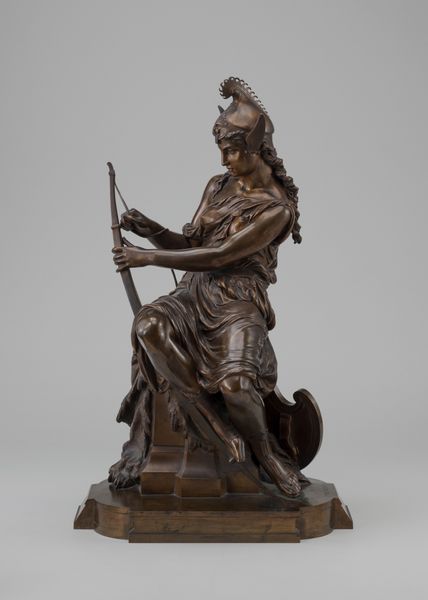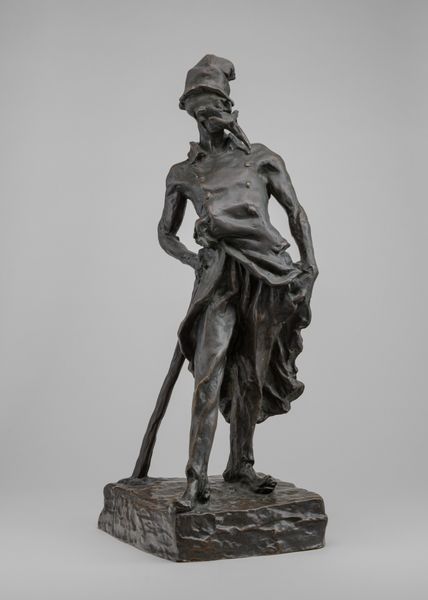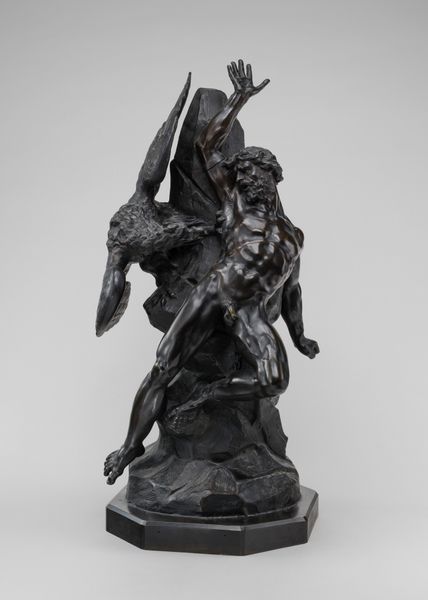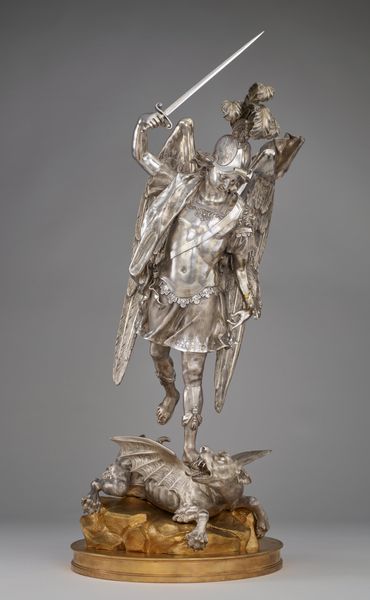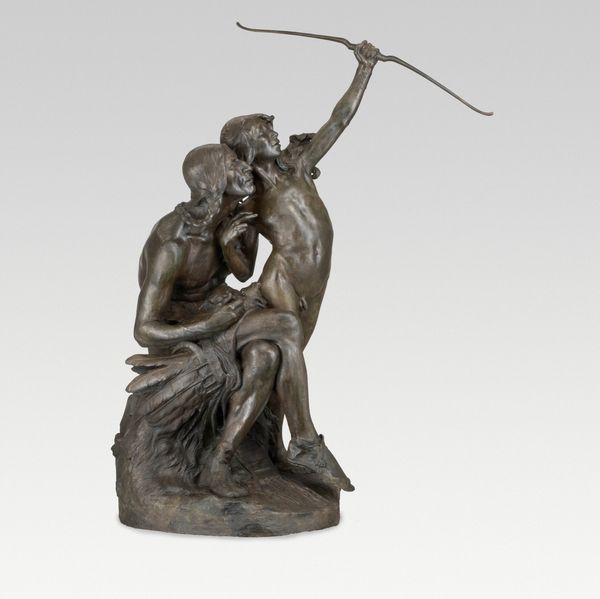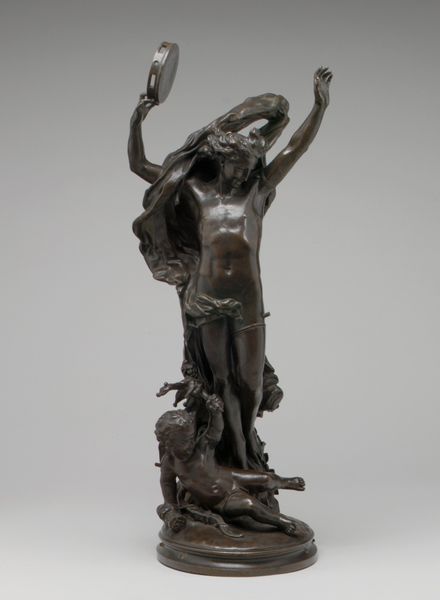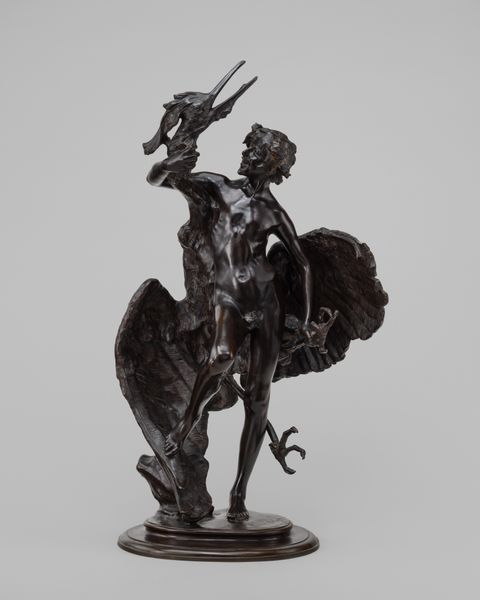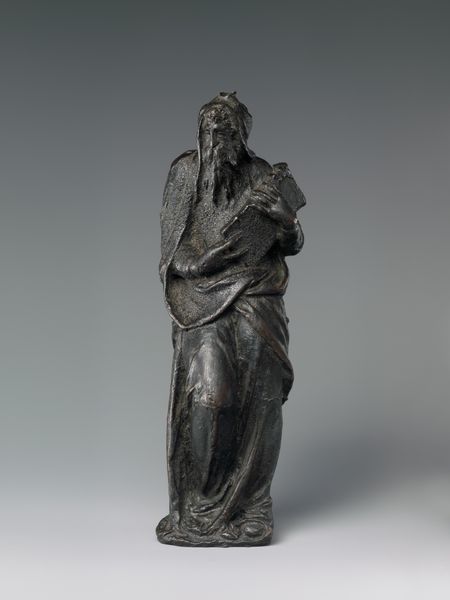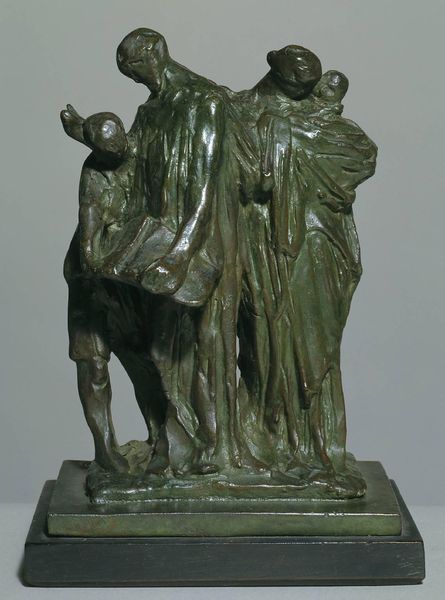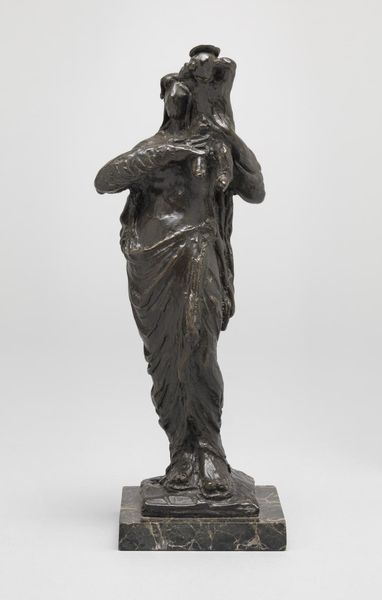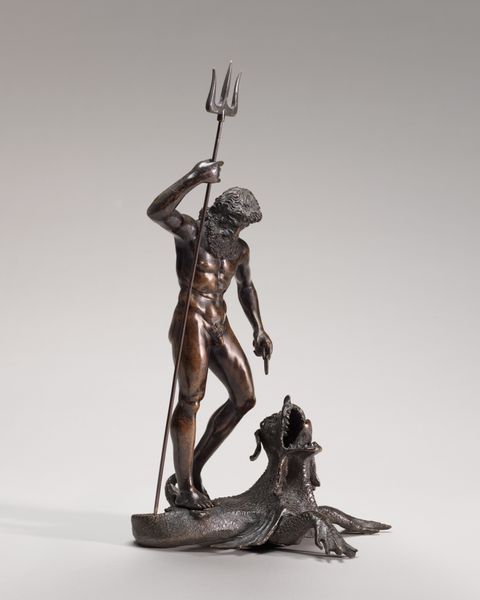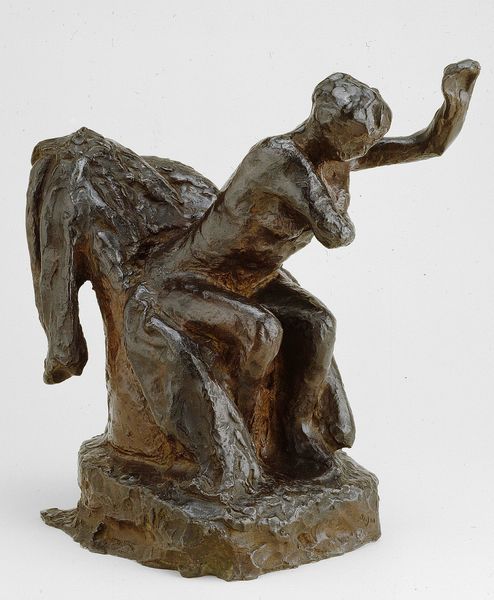
bronze, sculpture
#
sculpture
#
bronze
#
figuration
#
sculpture
Dimensions: 42.6 × 18.7 × 21.6 cm (16 3/4 × 7 3/8 × 8 1/2 in.)
Copyright: Public Domain
Curator: Hermon Atkins MacNeil cast this bronze sculpture, titled "The Vow of Vengeance," in 1894. It's a striking piece here at The Art Institute of Chicago. Editor: The title is certainly apt. There's a palpable tension in the air. It evokes a feeling of grief, coupled with the kind of fierce resolve that revenge breeds. I can feel it viscerally, a story etched into the bronze. Curator: MacNeil was deeply involved in representing Native American subjects, driven by a romantic impulse but also engaging in a moment of increased public attention to indigenous peoples and their ongoing marginalization within the expanding nation. How do you read that tension in the imagery? Editor: For me, the bow and arrow held aloft is more than a symbol of imminent violence. The angle directs the eye heavenward and toward judgment. The figure almost seems to implore some higher power to witness this vow. What I notice is that combination of personal loss driving that need for cosmic-scale witnessing, demanding action beyond the here and now. Curator: And look at how MacNeil positions the elder figure; their seated posture anchors the piece and underscores a kind of historical weight. But at the same time, the other figure's stance conveys urgency. Editor: Absolutely, it’s a dialogue of tradition against immediacy. We see those tensions, those juxtapositions playing out across cultures where personal pain runs into traditions of collective healing, or societal responses to trauma. The iconographic symbolism here becomes quite resonant with historical images depicting conflicts and the role of vengeance in solidifying communal identity. Curator: There's certainly the complexity of the context that often gets left out of the picture when discussing these pieces. One aspect of historical record and collective memory is that not all voices get equal time. I see MacNeil’s work speaking into that fraught silence from the past. It reminds us of art's role in shaping how societies remember their difficult histories. Editor: I see now this intertwining of personal grievance with monumental purpose, not to merely stir anger but perhaps as an act towards achieving reconciliation within one's self. It's heavy and thought provoking work.
Comments
No comments
Be the first to comment and join the conversation on the ultimate creative platform.
